Adventure! Troop 97
for boys & girls
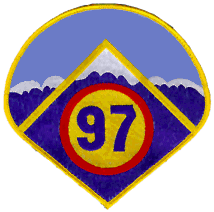
Fort Collins,
Colorado USA
www.troop97.net

Troops that last 25 years, let alone 50 years, are rare. Troop 97 began in 1952, failed in 1956, then started again in 1959, and has been in continuous existence since then. So we celebrate 70 years since the troop began, but also 63 years of continuous existence.
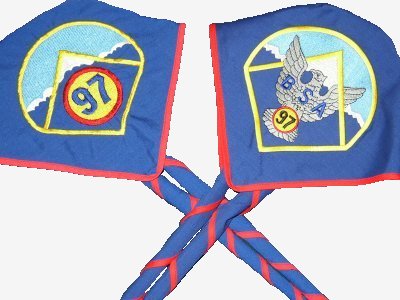
Troop 97 for boys:
Troop 97 for girls:
Sea Explorer Ship 97 Skippers:
BSA
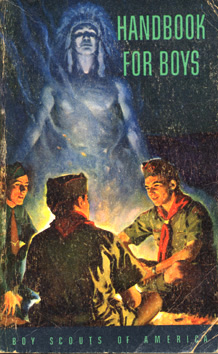
The late 1940s and the 1950s were a time of gradual change and rapid growth for the BSA (Boy Scouts of America). During this period, Cub Scout and Boy Scout age limits were lowered, Scout advancement underwent several changes, Cub Scouting added the Webelos program, and the Exploring program was extensively modified. In 1959, the BSA increased the dimensions of the Boy Scout Handbook (to its present size) and used full color throughout for the first time.
Between 1950 and 1960, BSA membership soared from 2.8 million to 5.2 million.
Troop 97
Troop 97 began in March, 1952, with eight Scouts on the first charter application. Started by the Brotherhood of St. Andrew (an Episcopal men's group), the troop was sponsored by St. Luke's Episcopal Church until 2022. For many years, the troop met at the old downtown church on the southeast corner of Oak & College, until the present building at 2000 Stover was completed in 1965 (this was the south edge of town at that time). Troop 97's first Scoutmaster was Norton Miner. The troop reached a peak of 24 Scouts on the 1954 Charter, and produced its first two Eagle Scouts in April, 1954. Troop 97 had five Scoutmasters in four years and died in 1956. It would be over two-and-a-half years before the troop was revived by a new group of leaders.
BSA
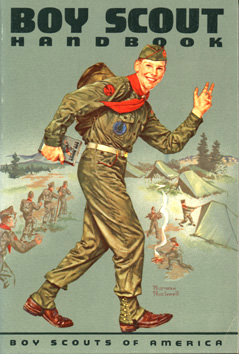
For the BSA, the 1960s were a time of increasing membership and high hopes for the future. The turmoil in American society of the late '60s (Vietnam protests, race riots, drug abuse) had little visible effect on the BSA until the early '70s. But childhood was becoming more complex, as illicit drugs and moral permissiveness became widespread. Scouting helped to provide solid standards during this era.
Sadly, the 1960s saw the BSA forfeit its valued reputation for conservation leadership, as the BSA failed to re-examine and update its now-antiquated and destructive outdoor practices. Not until the 1970s would the BSA begin to catch up with modern practices and begin again to teach Scouts to be leaders in preserving our outdoor resources.
The late 1960s finally saw the BSA end its 58-year record of allowing official racial segregation in its chartered Scout Councils, districts, troops, and camps.
Between 1960 and 1970, BSA membership climbed from 5.2 million to 6.3 million.
Troop 97
Troop 97 was reborn in June, 1959, with five Scouts on the charter application. The troop has been in continuous existence since then. Jerry Lamson was the first Scoutmaster of the new troop, but Scott Peterson took over as Scoutmaster during summer camp the month after the troop was re-organized.
From 1962 to 1966, St. Luke's also sponsored Sea Explorer Ship 97, a short-lived offshoot of the active Scout program at the church during that period (only 23 boys were members of the ship over its four-year life). The ship was closely allied with Troop 97, and about half of its registered adults and youth members had been members of Troop 97.
For Troop 97, the 1960s were dominated by the seven-year leadership of Scoutmaster Wayne Parsons (1962-69). Under Parsons, Troop 97 became one of the largest and most active troops in the area. Troop 97 achieved its highest charter enrollment of 84 Scouts in 1969 (although some remember troop membership exceeding 100 members at one time!). Eighteen Troop 97 Scouts earned Eagle under Parsons (including Ship 97's only Eagle). Parsons, who worked for the US Forest Service, also directed the troop in work on the Hornaday Award, which several Scouts received. This national award recognizes significant contributions to conservation, and is rarely earned.
BSA
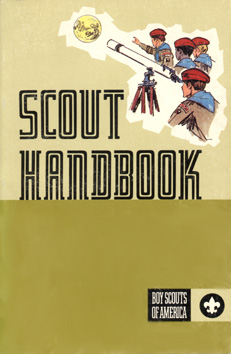
The 1970s decade was a dark time for the Boy Scouts of America. The period from 1972-80 was a national disaster, when BSA membership declined nationwide by 34% (a loss of 2.2 million members)! Although many changes in our society had an adverse impact on all youth programs, much of the cause for the drastic BSA membership decline was due to the radically changed Scout program of the period.
In 1972, the BSA made sudden and radical changes to the Scouting program, abandoning much of the traditional outdoor program, and applying inner-city programming to ALL of Scouting (what to do if lost?—The new Scout handbook's entire "Lost" section showed a boy talking to a policeman with the instructions, "Ask for directions to find the way"). New, "politically-correct" terminology defined the era (the BSA had no "boys" or "Boy Scouts" because "boy" was considered demeaning; no longer an outdoorsman, the Scoutmaster became a "manager of learning" who taught Scouts the 11 "leadership competencies;" he guided Scouts through "personal growth agreement conferences" as they advanced through the various "progress awards.")
The BSA began modifying the short-lived "Improved Scouting Program" in 1975, and finally scrapped the program in 1978-79, after only six years of use. The program stands in sharp contrast to Scouting before 1972 or since 1978.
During the 1970s, the BSA finally updated its heavy-impact conservation practices to modern low-impact policies designed to protect our rapidly dwindling outdoor resources.
BSA membership peaked at 6.5 million in 1972, and reached bottom in 1980 with 4.3 million.
Troop 97
Troop 97 during most of these years was a sad reflection of the national BSA trends. From the area's largest and most active troop in the late 1960s, it was dying by the mid 1970s, declining in membership every year but one from 1969 to 1976. The troop went through six Scoutmasters during those seven years.
By 1976, Troop 97 was nearly dead. The troop had only five Scouts and continued to exist solely to let four of them finish Eagle. The troop seldom camped and had not recruited a new member in over two years. With sad irony, the troop had announced its impending demise effective the moment those four Scouts finished their Eagle in September, 1976.
The story of Troop 97 continues, however, because new leadership appeared and revitalized the troop. New Scoutmaster John Nicol and Assistant Scoutmaster Hank Deutsch assumed control of the troop in September, 1976, and built the troop up to 30 enthusiastic Scouts by January, 1979. Today's Troop 97 owes its existence and many of its traditions to this building period.
BSA
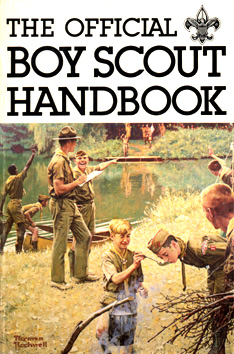
Starting in 1978, new national BSA leadership reversed course, scrapping much of the "Improved Scouting Program" and beginning a return to traditional Scouting that was completed in 1990 with the introduction of the 10th Edition of the Boy Scout Handbook.
BSA membership remained fairly steady for the rest of the 20th century, but began a gradual decline in the 2000's. What growth has occurred is due largely to lowered Cub Scout age limits and to the creation of new, often non-traditional programs (Tiger Cubs, Lion Cubs, Varsity Scouting, Learning for Life, STEM Scouts). Starting about 2000 BSA's opposition to gay membership (encouraged by the LDS church and other very conservative church sponsors) generated massive negative publicity and caused many sponsors to cease supporting the program.
Troop 97
Jeff Snowden became Troop 97's 16th Scoutmaster in January, 1979. Active troop membership since then has ranged from the mid-30s to over 80 Scouts. As it was in the 1960s, Troop 97 again became a large and active troop, including annual one- to three-week backpack, canoe, sailing, and other 'high adventure' treks from nearby to distant areas.
BSA
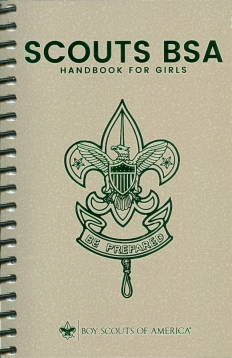
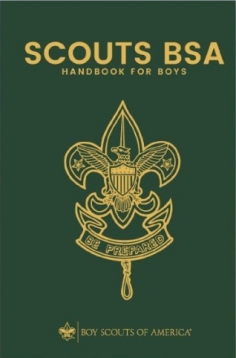
The 21st century has so far been a challenging time for the US's largest youth program. Since its 100th anniversary in 2010, the BSA has gradually ended its discrimination against gay Scouts & leaders. In 2013 BSA ended its ban on gay youth, followed by ending its ban on gay adults in 2015. And in 2017 BSA opened to trans youth & adults. It's unclear how this has affected membership, and at least one anti-gay Christian Scout-like organization started in 2013 in opposition to BSA's new openness.
Since 2010, the BSA's Venturing and Sea Scouting programs have been in precipitous decline, and it remains to be seen in what form these two programs will continue. The core of US Scouting continues to be Cub Scout packs (Kindergarten through grade 5) and Scout troops (age 10/11 until 18). Cub Scouting began admitting girls in 2018, and Boy Scouting renamed itself Scouts BSA and began admitting girls in 2019. At the same time (2018-19), the Church of Jesus Christ of Latter-day Saints dropped Scouting as its official church youth program for its boys. This represented a loss of roughly 20% of BSA youth membership (although LDS youth can still join regular Scouting units).
On top of losing the LDS church as a sponsor, the more than two-year-long Covid pandemic caused a substantial (and hopefully temporary) loss of both members and units (packs, troops, etc). And during this same timeframe the national organization was forced to seek bankruptcy protection while it worked to create a huge fund to settle child-abuse lawsuits mostly dating from 1990 and earlier when both BSA and our society were more lax in preventing and punishing such appalling behaviors. This year (2022) should see the lawsuits/bankruptcy settled and an end of the most adverse effects of the pandemic.
Troop 97
In 2019, Troop 97 became two 'linked' troops, one for boys and one for girls. Both share the '97' troop number and both are operated by a single troop committee. Long-time T97 Assistant Scoutmaster Kim Miller became the girls troop's first Scoutmaster.
When the Covid pandemic began in March 2020, our sponsoring church closed its doors to indoor meetings, and refused to allow the troop to meet in their building even after they reopened to other church groups. For over two years, Troop 97 struggled, first with Zoom meetings (not fun for the Scouts), then with limited 'socially distanced' outdoor activities. Later after many outdoor troop meetings in parks (sometimes in rain or snow), two local churches welcomed us to meet in their buildings. Finally in 2022, after 70 years as part of St Luke's Episcopal Church, Troop 97 was welcomed by a permanent new sponsor, Westminster Presbyterian Church.
Last Revision to This Page: 12 May 2022
Copyright © 1996-2022 by Troop 97 BSA